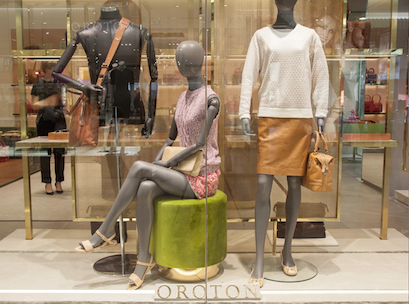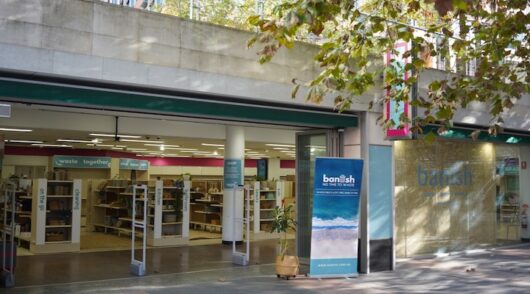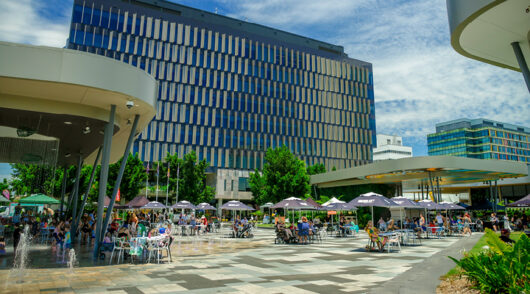 There’s never been much love lost between retailers and shopping centre landlords, that much is clear.
There’s never been much love lost between retailers and shopping centre landlords, that much is clear.
But while complaints about escalating rents and other commercial terms are nothing new, there’s a noted difference in the tone of conversation across the sector this year, as retailers and landlords alike search for new ways to address some of the more systemic issues facing bricks-and-mortar retail.
Some of the most prominent retail brands in the country are actively re-assessing their approach to physical retail, with an eye on reducing their financial exposure to poorly performing stores as market conditions worsen.
Mounting pressure from shareholders has driven the likes of Specialty Fashion Group (SFG), Myer, Premier Investments, Oroton Group and Michael Hill to signal their willingness to close stores in 2018 if re-negotiations with landlords don’t yield relief from escalating costs.
SFG’s new CEO, former Myer deputy chief Daniel Bracken, told Inside Retail last week that one of his first priorities would be negotiations with landlords over around 300 store closures in the next 12-18 months.
Like his former boss Myer CEO Richard Umbers, Bracken is under the pump to deliver earnings growth after SFG booked a 39 per cent decline in earnings before interest, tax, depreciation and amortisation (EBITDA) in the first-half of FY18.
Myer did not fare much better, confirming its intention to write-down the value of its intangible assets last week after revealing in its third profit warning since last July that it expects interim net profit to fall between $37 million and $41 million.
Umbers will also be moving forward with landlord negotiations before 2018 is out, with as many as 19 stores having previously been slated for possible closure, as the business looks to hit its sales productivity targets by cutting from the denominator.
Landlords take pre-emptive steps
While retailers assess store closures, landlords are taking steps to secure the future of their tenancy mix amid what Mirvac said last week were “challenging conditions” for its retail tenants.
JLL’s bi-annual shopping centre vacancy data, released last week, revealed a 0.4 per cent decrease in shopping centre vacancy to 3.6 per cent across the country from June-December 17.
Vacancy declined across all centre types – CBD, neighbourhood, sub-regional and regional – and across all states, while the high-profile administrations of Oroton and Topshop coincided with a decline in closures associated with voluntary administration from 2016.
JLL’s head of retail and board member of the Shopping Centre Council of Australia (SCCA), Tony Doherty, said the result was an indication that landlords are taking pre-emptive measures to remix their tenancy profiles, investing more heavily in growing-demand for casual dining and pop-up shops over traditional fashion.
“Managers and owners are quite proactive, there’s ongoing dialogue with retailers and managers and owners are getting ahead of the curve,” he says.
Doherty explains that the decline in fashion is most prominent in sub-regional and regional centres, and that the impact of store rationalisation will increasingly weigh on secondary quality centres in 2018.
It’s a sign that landlords are increasingly viewing centres as entertainment hubs geared more heavily towards services, which can’t be consumed online, rather than traditional retail destinations.
However, not everyone is convinced that the tenancy remix is sustainable, with concern mounting that many retailers may get crunched amid the change.
After Sumo Salad chief Luke Baylis put two leasing entities into administration last year, amid a dispute with Scentre Group over the influx of food retailers into centres, Australian Retailers Association (ARA) executive director Russell Zimmerman is convinced the worst is yet to come.
“We need landlords to really come down and have a conversation with retailers on this. You cannot continually have CPI +2 or five per cent year-on-year increases … it’s not sustainable,” Zimmerman points out.
Zimmerman has noticed that in the last nine years, ARA members are complaining more about industry conditions than ever before and that the number of retailers on hold-over provisions – whereby traders stay open on an expired lease – is masking actual vacancy risk.
Stores on hold-over provisions have been singled out as a focus for publicly-listed brands looking to consolidate in 2018, with Target slated to address its ailing performance by addressing expired leases.
However, many leasing agents believe that there remains a high level of tenant demand for prime retail assets, even among non-food retailers, with Colliers director of research Daniel Lees arguing that tenant churn isn’t necessarily negative.
“While retailer insolvencies and retailer exits often grab media headlines, these are sometimes retailers that had poor business models, poor sales, and that arguably the landlords are better off without them,” Lees says.
“It’s important to keep in mind that Australia has some very talented and experienced retail landlords that have been successful because they are constantly re-evaluating their customer offering, and optimising their tenant mix to ensure they are satisfying customer demands.”
National Retailers Association (NRA) CEO Dominique Lamb says that landlords also “understand the need not to impose over the top rents on retailers” and that the emergence of online shopping had adjusted expectations from most landlords.
“It’s always important for tenants to understand their rights and if they are being taken advantage of, to exercise those rights to their full extent,” Lamb says.
Casual mall leasing – a path towards cooperation?
Meanwhile, debate is currently waging over an area of increasing focus for centre owners: pop-up shops.
Also known as casual mall licensing, the phenomenon has grown in popularity with retailers, particularly pureplay retailers, for its flexibility and promotional appeal.
But it has also become a battlefield for a bitter industry fight, with the ARA, Australian Sporting Goods Association and Pharmacy Guild all outlining concern that temporary tenants are unfairly competing with established retailers.
The ARA is advocating for a “reasonable line of sight” between established tenants and related pop-up shops to limit competitive pressures under the casual mall licensing code, which the SCCA opposes.
Late last year, the ACCC ruled that a new committee be set up to evaluate the concerns of involved parties and act as necessary.
The committee has been formed in equal part between landlords and retail representatives, with the potential for an independent chair and a built-in mechanism for independent dispute resolution.
Encouragingly, both the SCCA and ARA believe the committee provides a path to better cooperation in the sector, with Zimmerman suggesting that an independent chair could be employed to address other issues of conflict between retailers and landlords, such as boundaries around rental terms.
SCCA executive director Angus Nardi says that areas related to policy, such as the casual mall licensing code, are an opportunity for retailers and landlords to come together and find compromise, but that co-operation had to be founded on evidence-based understanding between stakeholders.
“We have a track record of working constructively on policy and regulatory issues; a key example being our cooperative approach with the NRA, supported by NORA, on the casual mall licensing code,” he says.
“A cooperative approach can be helpful, and it’s neither a good starting point or serving their members well if some groups simply point the finger at landlords.
“It also doesn’t help when flawed claims are put forward such as ‘landlord standover tactics’, or one we’ve seen recently about falling shopping centre foot traffic. We’ve just completed a 10-year data analysis on foot traffic, and such a claim simply doesn’t stack up.”
Finding win-wins
While industry bodies evaluate a path forward for industry conflicts, there are signs that landlords are increasing their cooperation with retailers, particularly on changing the nature of physical retail offers and dealing with cyclical market issues, such as escalating power prices.
SCA Property is currently working closely with Woolworths on the roll-out of services such as in-store pickup and drive-through.
While the company increased its average rents by 6.7 per cent during the half and intends to pursue further increases to bring its portfolio in line with the broader industry, SCA COO Sid Sharma Mellows says areas like power prices are an opportunity to work with tenants to improve conditions.
SCA is currently preparing to install solar panels across four of its centres by the end of the year, with one trial in Griffith, NSW to go live soon.
As part of the program, retailers in the Griffith centre will be given a ten per cent discount on their electricity bills, which Sharma said is a win-win.
“We’ll continue to look at alternative energy while prices are increasing so tenant costs are management,” he says.
SCA’s power prices increased by 30 per cent in FY17, or $1.8 million per year. It expects that impact to be only $600,000 in FY18 by recovering approximately two-thirds of costs from tenants.
Ultimately, as established retailers begin to cash in on store-based digital engagement, landlords are likely to play a key role in enabling those currently struggling with changing market conditions to transform their businesses.
But escalating rents, alongside questions about how landlords will look to take a share of online revenue fulfilled through stores, remain key issues for the industry.





